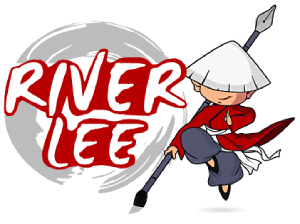What is Client-Side Rendering? Advantages and Disadvantages of CSR in Web Development
- Published on
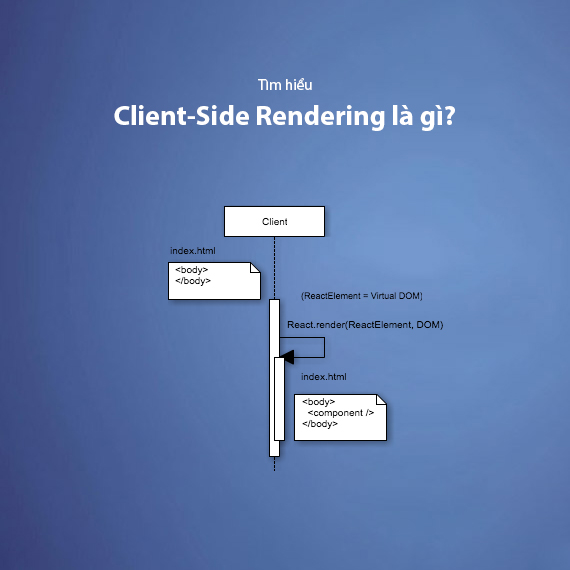
- What is Client-Side Rendering (CSR)?
- How CSR Works
- CSR Rendering Process
- Technologies Commonly Used in CSR
- Advantages and Disadvantages of Client-Side Rendering (CSR)
- Advantages of Client-Side Rendering
- Disadvantages of Client-Side Rendering
- Differences Between CSR and Server-Side Rendering (SSR)
- Client-Side Rendering (CSR):
- Server-Side Rendering (SSR):
- Visual Comparison of CSR and SSR:
- When Should You Use CSR?
- When Should You Avoid Using CSR?
- Conclusion
What is Client-Side Rendering (CSR)?
Client-Side Rendering (CSR) is a method where the rendering process of a web page occurs primarily in the user's browser, rather than being processed on the server. With CSR, the server provides only a basic HTML file along with JavaScript, and then the components of the webpage are loaded and displayed directly in the user's browser.
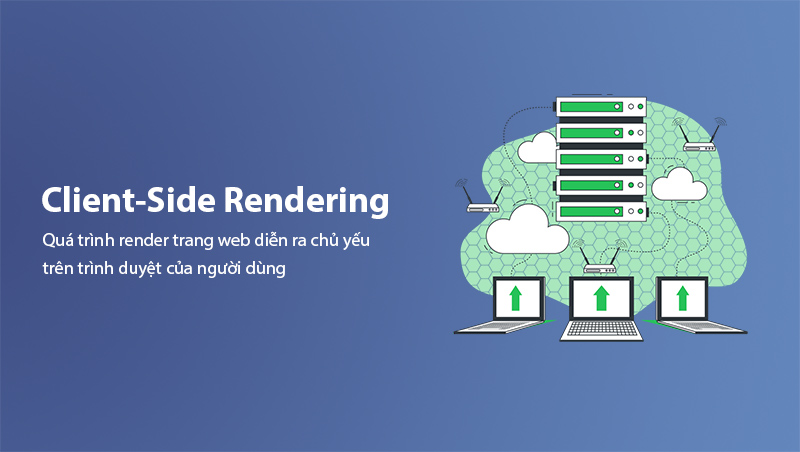
This means that after the initial page load, any content changes, navigation, or updates do not require reloading the entire page from the server, but only load data and re-render the necessary elements in the browser. As a result, the user experience becomes smoother and faster, especially for complex web applications.
CSR is widely used in Single Page Applications (SPA), where the entire application is loaded once, and the content changes without requiring a full page reload. Typical examples of applications using CSR include Gmail, Facebook, and Twitter, where users only load the homepage once, and the rest of the application is rendered dynamically in the browser.
How CSR Works
CSR Rendering Process
When a user visits a webpage that uses Client-Side Rendering (CSR), the rendering process follows these steps:
-
Load a basic HTML file: When a user accesses a page, the server sends a basic HTML file. This file usually includes only a simple structure, like a few
<div>tags, but contains very little actual content. -
Load and execute JavaScript: After loading the HTML, the browser continues to load JavaScript files. These JavaScript files handle data loading and rendering components of the webpage. JavaScript is crucial in CSR as it makes the webpage "interactive" and allows content to change without reloading the page.
-
Send API requests and receive data: Once the JavaScript is loaded and executed, the webpage uses API requests (often REST APIs or GraphQL) to fetch data from the server. This data could be user information, products, articles, etc.
-
Render content on the client: The data retrieved from the API is processed by JavaScript to re-render content on the webpage. Dynamic components are updated instantly without requiring a page reload.
-
Create a smooth user experience: From this point onwards, all interactions, such as navigating between pages, changing information, etc., no longer require reloading the entire page. Instead, parts of the page are updated quickly and smoothly.
Technologies Commonly Used in CSR
To implement Client-Side Rendering, web developers often use some popular technologies and frameworks:
- React: A powerful JavaScript library developed by Facebook. React allows building user interfaces (UI) with a component-based architecture, making it easy and efficient to update and re-render content.
- Angular: A comprehensive framework from Google, providing a complete solution for building complex web applications with CSR. Angular includes robust tools for managing HTTP requests and server interactions.
- Vue.js: Another JavaScript framework known for its flexibility and ease of learning. Vue.js is often used to develop interactive and dynamic web applications with CSR.
These technologies simplify the rendering process and ensure that webpages can load quickly while providing an excellent user experience.
Advantages and Disadvantages of Client-Side Rendering (CSR)
Advantages of Client-Side Rendering
-
Smooth user experience: One of the most prominent advantages of Client-Side Rendering is the ability to deliver a smooth user experience. When a webpage uses CSR, after the initial load, subsequent page transitions or interactions occur very quickly without requiring a full page reload. This creates an experience similar to native applications, where users can navigate and interact without waiting for pages to reload.
-
Optimized for dynamic web applications: CSR is highly suitable for Single Page Applications (SPA) or websites with dynamic content that doesn't require reloading the entire page. With CSR, applications can update content in real-time, such as in social networks or trading applications.
-
Reduces server load: With CSR, the server only needs to send the basic HTML file and the necessary data. The entire rendering process and interaction handling are performed on the client (user's browser), reducing the workload for the server. This is especially beneficial for large-scale deployments, as the server does not need to process and create complete HTML pages for every user request.
-
Speeds up subsequent loads: One advantage of CSR is that after the initial page load, subsequent page transitions are extremely fast, as only new data is loaded instead of reloading the entire HTML page. This makes webpages faster and saves bandwidth.
Disadvantages of Client-Side Rendering
-
Slower initial load time: A notable drawback of CSR is that the initial load time can be slower compared to Server-Side Rendering (SSR). Since the browser must download and execute JavaScript before displaying content, users may have to wait longer to see content on the screen than with SSR.
-
SEO challenges: While it's possible to improve SEO for CSR applications using techniques like Server-Side Rendering (SSR) or Prerendering, optimizing SEO for CSR still presents challenges. Traditional search engines (like Google) may have issues crawling CSR pages if JavaScript is not executed correctly, which can reduce the visibility of the website on search engines.
-
Requires JavaScript to be enabled: For CSR to function correctly, JavaScript must be enabled in the user's browser. If users accidentally or intentionally disable JavaScript, the webpage cannot display correctly, affecting their experience. This can be an obstacle for certain user groups.
-
Not optimized for static websites: If the website mainly consists of static pages (e.g., informational pages or blogs with little interactivity), CSR might not be the optimal method. Using CSR in such cases could lead to unnecessary resource consumption since loading JavaScript and executing dynamic rendering processes wouldn't add much value to the user experience.
Differences Between CSR and Server-Side Rendering (SSR)
When learning about Client-Side Rendering (CSR), it's important to understand the difference between CSR and another popular method, Server-Side Rendering (SSR). Both methods are used to render content on webpages, but their processes and effects on user experience differ significantly.
Client-Side Rendering (CSR):
- Rendering in the browser: In CSR, all processes of handling and rendering content occur in the user's browser. After the page is loaded, JavaScript is responsible for loading data and dynamically rendering content.
- Optimized for dynamic web applications: CSR is well-suited for web applications with high interactivity and frequent data updates without requiring page reloads. This results in a smooth user experience.
- Faster subsequent loads: Once the first page is loaded, subsequent page transitions are extremely fast because only data is loaded and content is rendered rather than reloading the entire page.
Server-Side Rendering (SSR):
- Rendering on the server: Unlike CSR, SSR completes the rendering of webpage content on the server before sending the fully rendered page to the user's browser. The browser only needs to display the pre-rendered HTML page.
- Better for SEO and initial load speed: Since content is already rendered when sent to the browser, SSR is advantageous for SEO. Search engines can easily crawl and index content on the page without executing JavaScript.
- Slower for subsequent navigation: A major drawback of SSR is that every time the user navigates to another page, the entire page needs to be reloaded from the server, which can reduce user experience.
Visual Comparison of CSR and SSR:
| Feature | Client-Side Rendering (CSR) | Server-Side Rendering (SSR) |
|---|---|---|
| Rendering Process | Rendered in the browser | Rendered on the server |
| SEO | More challenging unless supported | Better since content is pre-rendered |
| Page Load Speed | Slower initially, but faster subsequently | Faster on the first load |
| User Interaction | Smooth, no page reloads | Requires page reloads for each navigation |
When Should You Use CSR?
-
Dynamic and Highly Interactive Web Applications: Client-Side Rendering is an ideal choice for dynamic web applications like SPA (Single Page Application), where users need continuous interaction without reloading the page for each navigation. Applications such as Gmail, Facebook, Trello, and Twitter use CSR to provide fast and smooth user experiences.
-
Websites That Frequently Update Content: If you're developing a website or application that requires frequent content updates without reloading the page (e.g., in news apps, social networks, or e-commerce platforms), CSR will help you achieve this. CSR allows parts of the web page to be re-rendered in real-time without disrupting the user experience.
-
Optimizing Performance After Initial Load: If you want to reduce the server's workload and improve load speed after the first load, CSR is a good option. Once the first page is loaded, subsequent requests only need to fetch data and re-render parts of the page instead of reloading the entire page, improving speed and performance.
-
When You Can Use SEO Support Tools: If you utilize tools like Prerendering or combine CSR with SSR (Server-Side Rendering) to improve search engine indexing capabilities, CSR can still be a suitable solution for websites that require high SEO standards, such as blogs or e-commerce sites.
When Should You Avoid Using CSR?
-
Static or Rarely Changing Websites: If your website primarily consists of static pages, such as a personal blog, landing page, or business introduction site with minimal content changes, using CSR might waste resources. In this case, using Server-Side Rendering (SSR) or Static Site Generation (SSG) will save bandwidth and improve page load speeds.
-
Websites That Need Immediate SEO Optimization: If SEO is a top priority from the start, especially if your website needs to be quickly and accurately indexed by search engines, SSR or SSG may be a better choice than CSR. Although SEO for CSR can be optimized using supporting techniques like Prerendering, server-side rendering offers a significant advantage in SEO.
-
Web Applications That Must Support Users Without JavaScript: While CSR works well when JavaScript is enabled, if your target audience includes users who do not use or have JavaScript disabled in their browsers, the website will not function properly. If this affects your target users, you should consider alternative solutions such as SSR or SSG, where content is pre-rendered and does not depend on JavaScript.
-
When Initial Page Load Speed Is Crucial: If your website demands extremely fast initial load times, especially with less frequently changing content, Server-Side Rendering (SSR) or Static Site Generation (SSG) may be more optimal than CSR. SSR helps reduce the initial page load time and provides a better user experience for less interactive scenarios.
Conclusion
Client-Side Rendering (CSR) is a powerful and flexible method for developing web applications, particularly for dynamic, highly interactive applications like SPA (Single Page Application). With CSR, you can deliver a smooth user experience, save server resources, and accelerate post-first-load speeds. However, CSR also has some disadvantages, such as less-than-optimal SEO out of the box and slower initial page load times compared to Server-Side Rendering (SSR).
Therefore, choosing between CSR and other methods depends on the specific requirements of the project and the target audience. If you're developing a website with dynamic content and require fast interaction speeds, CSR is an ideal choice. However, if SEO or initial page load speed is the top priority, you might want to consider using SSR or SSG (Static Site Generation) to ensure effectiveness.
Finally, one of the key points in web development is to always understand the benefits and limitations of each technology and approach. Choosing the right rendering method will help you build an efficient website that meets user needs and optimizes performance for search engines.
Latest Posts
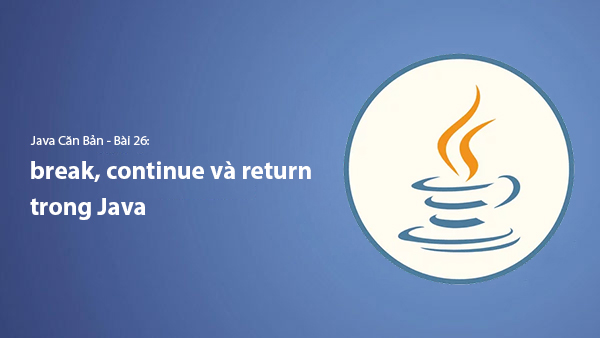
Lesson 26. How to Use break, continue, and return in Java | Learn Java Basics
A guide on how to use break, continue, and return statements in Java to control loops and program execution flow effectively.

Lesson 25. The do-while Loop in Java | Learn Basic Java
A detailed guide on the do-while loop in Java, including syntax, usage, examples, and comparison with the while loop.
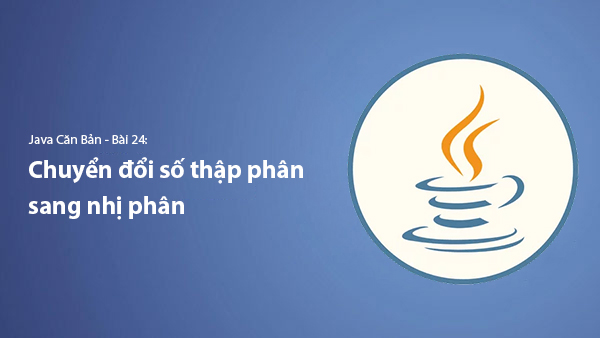
Lesson 24. How to Convert Decimal to Binary in Java | Learn Basic Java
A guide on how to convert numbers from the decimal system to the binary system in Java using different methods, with illustrative examples.

Lesson 23. How to Use the While Loop in Java | Learn Java Basics
Learn how to use the while loop in Java with syntax, real-world examples, and practical applications in Java programming.
Related Posts
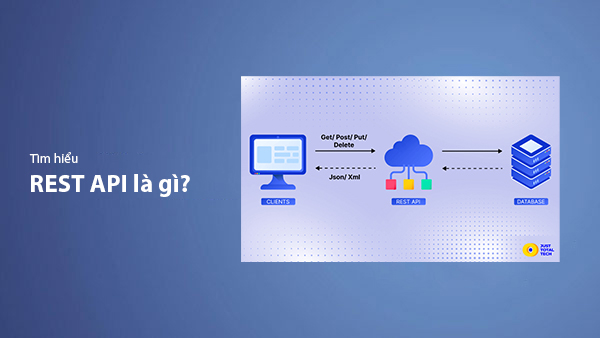
What is REST API? Complete A-Z Knowledge About REST API
REST API is one of the essential concepts that every backend developer needs to fully understand. This article provides comprehensive knowledge about REST API, including its definition, principles of operation, and how to build a standard RESTful API.
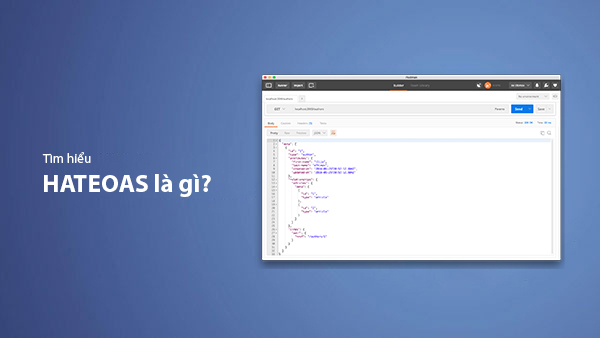
What is HATEOAS? How to Build APIs Using HATEOAS
Learn about HATEOAS, an important concept in API development, and how to build APIs using HATEOAS to improve interactivity and scalability.

What Is GraphQL? The Advantages of GraphQL Over REST API
Explore GraphQL, a modern API technology, and why it outperforms REST API in many web development scenarios.
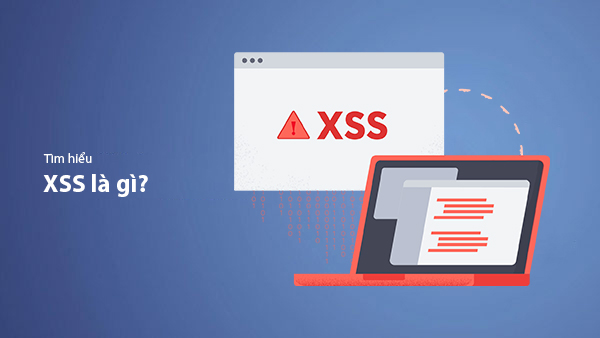
What is XSS? Signs of Detection and Effective Prevention Methods
Learn about XSS, signs of detection, and effective prevention methods for XSS attacks in websites.

